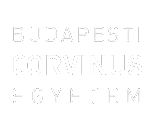Börcsök, Tamás (2019) Selectivity effects of opening new religious schools in Hungary = Új egyházi iskolák nyitásának iskolai szelektivitásra gyakorolt hatása Magyarországon. TDK dolgozat, BCE, Economics section.
|
PDF
- Requires a PDF viewer such as GSview, Xpdf or Adobe Acrobat Reader
2MB |
Absztrakt (kivonat)
The aim of this paper is to contribute to the selectivity branch of the debate about free school choice. The effect of free school choice on selectivity is hard to measure in a steady state. Between the years 2010 and 2016, the ratio of children attending religious schools in Hungary doubled, reaching around 14%. Because of this, more children gained access to more well-funded and higher quality schools. Religious schools might be able to attract better teachers and have more freedom in their admissions policy. In areas where high quality had not been available before, the newly opened religious schools are expected to be in demand by parents. If religious schools select children during their admissions process, their appearance in a school market can increase educational inequalities, that can have longterm detrimental effects. The opening of a religious school can be viewed as introducing more variety in terms of school choice in a given school market. The effects of free school choice are hard to measure in a steady state, but viewing this event as a natural experiment, I can gain insight into the effect of increasing school choice on selectivity. Results utilizing a statistical method to delineate local school markets show that about one-third of the rise in the segregation index resulted from the rise in children attending religious schools.
| Tétel típus: | TDK dolgozat |
|---|---|
| További információ: | 2. díj |
| Témakör: | Oktatás |
| Azonosító kód: | 13286 |
| Képzés/szak: | Közgazdasági elemző |
| Elhelyezés dátuma: | 04 Dec 2020 06:53 |
| Utolsó változtatás: | 04 Dec 2020 06:55 |
Csak a repozitórium munkatársainak: tétel módosító lap

